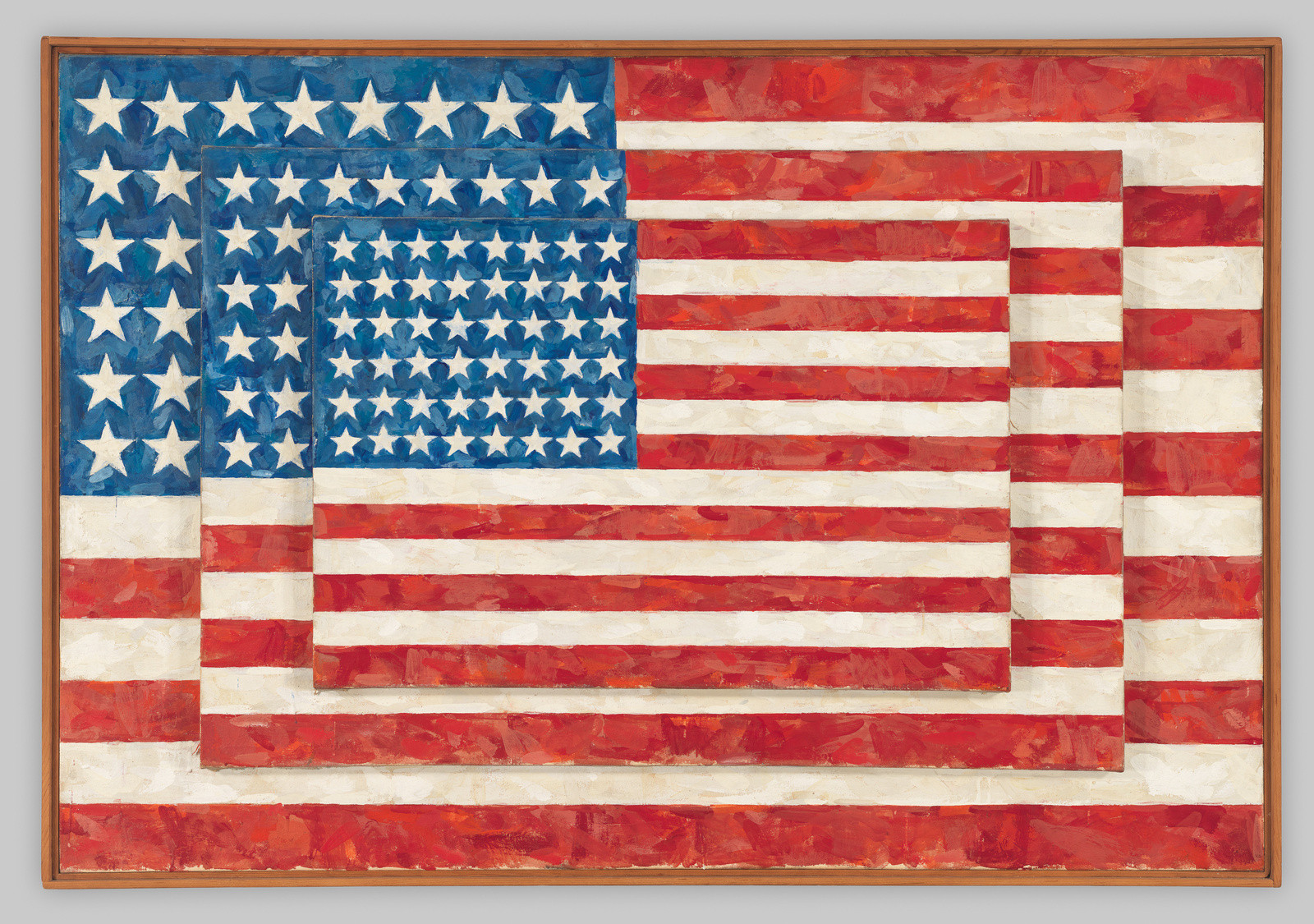In the realm of postwar American art, Jasper Johns emerged as a pivotal figure, challenging conventional notions of representation and abstraction. Among his most iconic and enduring series are his flag paintings, initiated in 1954. These works, including the seminal piece Three Flags from 1958, invite viewers to reconsider familiar symbols and the very act of seeing. Johns astutely observed that the American flag, a ubiquitous emblem, is often “seen and not looked at, not examined.” Three Flags compels us to look closely, to delve beneath the surface of this recognizable image and explore the rich complexities embedded within its layered construction.
 Jasper Johns' Three Flags, 1958, encaustic on canvas, layered American flags with textured surface.
Jasper Johns' Three Flags, 1958, encaustic on canvas, layered American flags with textured surface.
The Encaustic Technique: A Tactile Surface
A defining characteristic of Three Flags is Johns’s masterful use of encaustic. This ancient technique involves mixing pigment with hot wax, which is then applied to the canvas in successive strokes. As the wax cools and solidifies, it creates a textured, almost sculptural surface that is both visually captivating and tactilely suggestive. The accumulation of these individual marks highlights the process of creation itself, drawing attention to the artist’s hand and the materiality of the painting. This deliberate emphasis on process is crucial to understanding Johns’s artistic intentions.
Composition and Perspective: Defying Expectations
The composition of Three Flags further contributes to its intriguing nature. The artwork presents not one, but three American flags, each progressively smaller than the last, layered one on top of the other. This arrangement defies traditional perspective, where objects recede into the distance. Instead, the flags project outwards, creating a sense of visual tension and challenging our spatial perception. This unconventional approach forces the viewer to confront the image in a new way, questioning established modes of seeing and representation in art.
Abstraction and Representation: A Deliberate Ambiguity
Through Three Flags, Jasper Johns masterfully navigates the delicate boundary between abstraction and representation. By focusing on the flag as a subject, Johns utilizes a readily recognizable image. However, his artistic treatment – the encaustic technique, the layered composition, and the emphasis on surface texture – shifts the focus from the flag’s symbolic meaning to its visual and material qualities. Johns himself stated that this exploration allowed him to “go beyond the limits of the flag, and to have different canvas space.” This suggests that Three Flags is not simply about the American flag itself, but rather an investigation into the nature of art, perception, and the interplay between what we see and how we interpret it. The painting encourages viewers to look beyond the iconic symbolism and appreciate the artwork for its formal and conceptual innovations.
Located on Floor 7 of the Whitney Museum of American Art, Three Flags remains a powerful example of Jasper Johns’s groundbreaking contributions to contemporary art. This 1958 encaustic on canvas piece invites ongoing dialogue about art, symbolism, and the act of looking itself.

